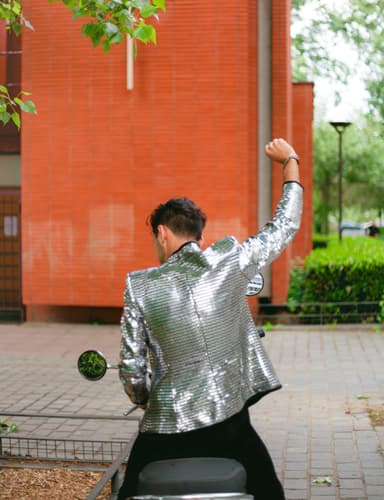Myths about teaching can hold you back
- Year 6
Changing the direction of light
I can explain how mirrors are reflective materials that are used to change the direction in which light travels.
- Year 6
Changing the direction of light
I can explain how mirrors are reflective materials that are used to change the direction in which light travels.
These resources were made for remote use during the pandemic, not classroom teaching.
Switch to our new teaching resources now - designed by teachers and leading subject experts, and tested in classrooms.
Lesson details
Key learning points
- When light is reflected off the surface of an object, it changes direction.
- Scientific diagrams and models can be used to show how light changes direction when it is reflected off surfaces.
- Mirrors are sometimes used to deliberately change the direction of a beam of light.
- A periscope has angled mirrors to enable you to see over walls or around corners.
Keywords
Reflected - If light is reflected, it is bounced off a surface.
Direction - Direction is the path that something takes to reach a particular place
Model - A model is used to describe something that can't be experienced directly.
Angle - An angle is the space between two straight lines which join at a vertex or point.
Periscope - A periscope is a piece of equipment that uses angled mirrors to enable you to see over walls or around corners.
Common misconception
Light can only reflect off shiny surface; light does not always travel in straight lines when it bounces off a mirror.
Diagrams and investigations will be used to address the misconceptions.
To help you plan your year 6 science lesson on: Changing the direction of light, download all teaching resources for free and adapt to suit your pupils' needs...
To help you plan your year 6 science lesson on: Changing the direction of light, download all teaching resources for free and adapt to suit your pupils' needs.
The starter quiz will activate and check your pupils' prior knowledge, with versions available both with and without answers in PDF format.
We use learning cycles to break down learning into key concepts or ideas linked to the learning outcome. Each learning cycle features explanations with checks for understanding and practice tasks with feedback. All of this is found in our slide decks, ready for you to download and edit. The practice tasks are also available as printable worksheets and some lessons have additional materials with extra material you might need for teaching the lesson.
The assessment exit quiz will test your pupils' understanding of the key learning points.
Our video is a tool for planning, showing how other teachers might teach the lesson, offering helpful tips, modelled explanations and inspiration for your own delivery in the classroom. Plus, you can set it as homework or revision for pupils and keep their learning on track by sharing an online pupil version of this lesson.
Explore more key stage 2 science lessons from the Light and how it travels unit, dive into the full primary science curriculum, or learn more about lesson planning.

Equipment
Balls, torches, mirrors, sticky tack, felt tip pens, protractors and large paper.
Content guidance
- Risk assessment required - equipment
Supervision
Adult supervision required
Licence
Prior knowledge starter quiz
6 Questions
Q1.Light travels in __________ lines.
Q2.Which of these is not a light source?




Q3.Light is when it hits a surface and bounces off in another direction.
Q4.What is a light ray?
Q5.What is the name of the opening in the eye that allows light to enter?
Q6.If an object is not a light source, where does the light come from that allows us to see it?
Assessment exit quiz
6 Questions
Q1.When light is reflected off the surface of an object, it changes ...
Q2.Which of these surfaces would be the best to use if you want to deliberately change the direction of a beam of light?
Q3.What are scientific models useful for?
Q4.Which of these is a good model to help us understand how light is reflected?
Q5.A is a piece of equipment with angled lenses or mirrors to enable you to see over walls or around corners.

Q6.Which of these diagrams correctly show how light is reflected through a periscope?





